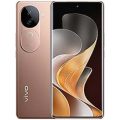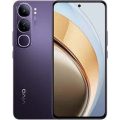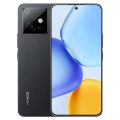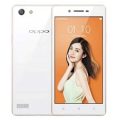Xiaomi Poco C51
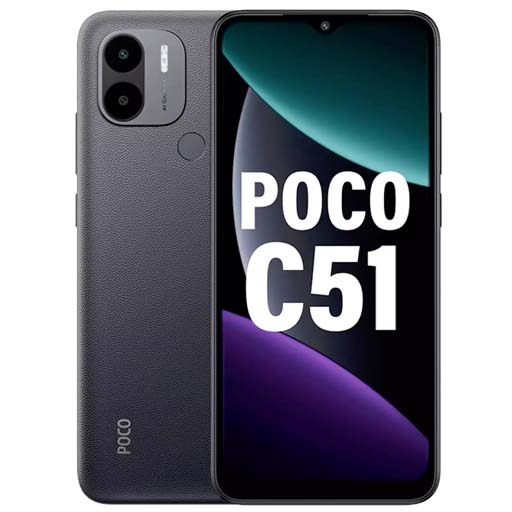



-
Released: 2023, April 13
-
Operating System: Android 13, MIUI
-
Display: 6.52" 720x1600 pixels
-
Camera: 8MP 1080p
-
RAM: 4GB RAM Helio G36
-
Battery: 5000mAh Li-Po
Specifications
Prices
| Unofficial Unofficial |
4GB 64GB ৳11,000 |
Launch
| Announced Announced | 2023, April 07 |
| Status Status | Available. Released 2023, April 13 |
Network
| Technology Technology | GSM / HSPA / LTE |
| 2G 2G |
GSM 850 / 900 / 1800 / 1900 - SIM 1 & SIM 2 |
| 3G 3G |
HSDPA 850 / 900 / 1900 / 2100 |
| 4G 4G |
1, 3, 5, 8, 40, 41 |
| Speed Speed | HSPA 42.2/5.76 Mbps, LTE-A |
| GPRS GPRS | |
| EDGE EDGE |
Body
| Dimensions Dimensions | 164.9 x 76.8 x 9.1 mm (6.49 x 3.02 x 0.36 in) |
| Weight Weight | 192 g (6.77 oz) |
| Build Build | Glass front, plastic back |
| SIM SIM |
Dual SIM (Nano-SIM, dual stand-by) |
Display
| Type Type | IPS LCD capacitive touchscreen, 16M colors |
| Size Size | 6.52 inches, 102.6 cm2 (~81.0% screen-to-body ratio) |
| Resolution Resolution | 720 x 1600 pixels, 20:9 ratio (~269 ppi density) |
| Refresh Rate Refresh Rate | 60Hz |
| Features Features | 400 nits (typ) |
Platform
| Operating System OS => Every computer system run on a base software called Operating System (OS). Operating System controls all basic operations of the computer (such as smartphone, PDAs, tablet computers and other handheld devices). The Operating System allows the user to install and run third party applications (apps), apps are used to add new functionality to the device. | Android 13 (Go edition), MIUI |
| Chipset Chipset |
Mediatek Helio G36 (12 nm) |
| CPU CPU |
Octa-core (4x2.2 GHz Cortex-A53 & 4x1.7 GHz Cortex-A53) |
| GPU GPU |
PowerVR GE8320 |
Memory
| Card slot Card slot | microSDXC (dedicated slot) |
| Internal Internal | 64 GB eMMC 5.1 |
| RAM RAM | 4 GB |
Main Camera
| Back Back |
8 MP, f/2.0, (wide) 0.08 MP (depth) |
| Features Features | Dual-LED flash, |
| Video Video |
1080p@30fps |
Selfie camera
| Front Front |
5 MP, f/2.2 |
| Features Features | HDR |
| Video Video |
1080p@30fps |
Sound
| Alert Types | Vibration, MP3, Ringtones |
| Loudspeaker | Yes |
| 3.5 mm jack 3.5 mm jack | Yes |
Connectivity
| WLAN WLAN | Wi-Fi 802.11 a/b/g/n |
| Bluetooth Bluetooth is a wireless communications technology for exchanging data between mobile phones, headsets, computers and other network devices over short distances without wires, Bluetooth technology was primarily designed to support simple wireless networking of personal consumer devices. | 5.0, A2DP, LE |
| GPS GPS The Global Positioning System is a satellite-based radio navigation system, GPS permits users to determine their position, velocity and the time 24 hours a day, in all weather, anywhere in the world, In order to locate your position, your device or GPS receiver must have a clear view of the sky. | GPS, GLONASS, BDS |
| NFC NFC (Near field communication) is a set of standards for smartphones and similar devices to establish peer-to-peer radio communications with each other by touching them together or bringing them into proximity, usually no more than a few inches. | |
| FM Radio | Yes |
| USB | microUSB 2.0, OTG |
| Infrared port Infrared connectivity is an old wireless technology used to connect two electronic devices. It uses a beam of infrared light to transmit information and so requires direct line of sight and operates only at close range. |
Features
| Sensors Sensors are electronic components that detects and responds to some type of input from the physical environment. The specific input could be light, heat, motion, moisture, pressure and location, The output is generally a signal that is converted to use in computing systems, a location sensor, such as a GPS receiver is able to detect current location of your electronic device. |
Fingerprint (rear-mounted), accelerometer |
| Messaging Messaging | SMS(threaded view), MMS, Email, IM |
| Browser Web Browser => a web browser is a software application used to locate, retrieve and display content on the World Wide Web, including Web pages, images, video and other files, The primary function of a web browser is to render HTML, the code used to design or markup webpages. | HTML5 |
| Java Support Java for Mobile Devices is a set of technologies that let developers deliver applications and services to all types of mobile handsets, ranging from price efficient feature-phones to the latest smartphones. Java is currently running on over 3 billion phones worldwide, and growing. It offers unrivaled potential for the distribution and monetization of mobile applications. |
Battery
| Battery Type Battery Type => Cell phones run on various kinds of batteries depending on the manufacturer, phone size or shape and features. There are basically four types of cell phone batteries => Lithium Polymer, Lithium Ion, Nickel Metal Hydride and Nickel Cadmium. | Non-removable Li-Po |
| Capacity Battery Capacity is a measure (typically in Amp-hr) of the charge stored by the battery, and is determined by the mass of active material contained in the battery. The battery capacity represents the maximum amount of energy that can be extracted from the battery under certain conditions. | 5000 mAh |
| Charging Wireless Charging (Inductive Charging) uses an electromagnetic field to transfer energy between two objects. This is usually done with a charging station. Energy is sent through an inductive coupling to an electrical device, which can then use that energy to charge batteries or run the device. |
10W wired |
| Fast Charging Fast Charging | Yes |
More
| Made by Made by | China |
| Colors |
Power Black, Royal Blue |

Xiaomi Poco C51 Review in the Bangladeshi Market
The smartphone market in Bangladesh has grown rapidly over the past few years, with Xiaomi Poco C51 and mid-range devices gaining significant popularity among consumers. Among the wide range of options, Xiaomi Poco C51 has emerged as a notable contender in the entry-level category. Known for its affordability, reliability, and brand value, the device has been well-received by Bangladeshi consumers looking for a practical phone without spending too much. In this review, we will analyze the Poco C51 in terms of design, performance, battery life, camera, software experience, and its overall market reception in Bangladesh.
Throughout this review, the tag Xiaomi Poco C51 2% will be incorporated to maintain SEO focus and enhance the content’s discoverability.
Design and Build Quality
The Xiaomi Poco C51 may be an entry-level phone, but its design language feels modern and durable. It features a plastic body with a leather-textured back, which not only improves grip but also makes the device resistant to fingerprints and smudges. The square-shaped camera module at the back gives it a premium look, while the fingerprint sensor is conveniently placed just below the camera setup for quick access.
Despite its budget pricing, the build quality is solid, and the phone feels comfortable to hold thanks to its lightweight structure. For Bangladeshi users, who often prefer a phone that balances aesthetics with practicality, the Xiaomi Poco C51 delivers well in this category.
Display Experience
The device comes with a 6.52-inch IPS LCD display with an HD+ resolution (720 x 1600 pixels). While not as sharp as Full HD panels, it is bright and sufficiently clear for everyday use. The screen supports a 20:9 aspect ratio, making it convenient for watching YouTube videos, browsing social media, or even reading e-books.
In bright sunlight, the display holds up decently, although some users might feel the brightness could have been better. Compared to other phones in this price range, the Xiaomi Poco C51’s screen is quite competitive, offering immersive visuals for budget-conscious consumers.
Camera Performance
The Xiaomi Poco C51 features a dual-camera setup on the back, consisting of an 8MP primary camera and a depth sensor, while the front houses a 5MP selfie camera. For an entry-level device, the camera performance is average but reliable. In good lighting conditions, the rear camera captures decent details and natural colors, making it suitable for casual photography.
However, in low-light situations, the image quality drops with noticeable noise and reduced sharpness. The selfie camera works well enough for video calls and basic selfies, though users should not expect flagship-level quality. In comparison to its competitors, the Xiaomi Poco C51 camera setup is satisfactory for its price point but not a standout feature.
Performance and Hardware
One of the major highlights of the Xiaomi Poco C51 is its performance for the budget category. Powered by the MediaTek Helio G36 processor, paired with 2GB or 3GB of RAM, the phone handles basic tasks such as calling, messaging, browsing, and light app usage smoothly.
The device runs on Android 13 Go Edition, which is optimized for lower-end hardware. This ensures a clean, responsive interface with fewer lags when switching between apps. However, multitasking with heavier apps or playing graphic-intensive games can be challenging due to limited RAM. Casual games like Subway Surfers or Candy Crush run fine, but high-demand titles like PUBG or Free Fire struggle at higher settings.
For Bangladeshi students, small business owners, or anyone looking for a phone primarily for social media, online classes, and everyday use, the Xiaomi Poco C51 offers more than adequate performance.
Battery Life
Battery life is one of the strongest aspects of the Xiaomi Poco C51 The phone packs a 5,000mAh battery, which easily lasts a full day of regular use and can stretch into two days with light to moderate usage. Whether you are attending online classes, watching videos, or browsing Facebook, the battery backup ensures minimal interruptions.
Charging is done through a 10W charger via micro-USB, which feels outdated compared to Type-C charging on some competitors. Charging from 0 to 100% takes around 2.5 hours, which may be a drawback for users who want quick recharges. Nevertheless, the long-lasting battery makes up for the slower charging speed.

Software and User Interface
Running on Android 13 Go Edition, the Xiaomi Poco C51 offers a lightweight and clean interface with minimal bloatware. The Go Edition ensures smoother performance on limited hardware by optimizing essential apps like YouTube Go, Maps Go, and Gmail Go.
For Bangladeshi users who want a phone for essential functions without unnecessary clutter, this software approach is highly appealing. The inclusion of a fingerprint sensor and face unlock also enhances convenience, a feature not always available in this price segment.
Connectivity and Network Compatibility
The Xiaomi Poco C51 supports dual SIM 4G connectivity, which is crucial in Bangladesh where most users rely heavily on mobile internet for communication, entertainment, and business. It also includes Wi-Fi, Bluetooth 5.0, and GPS, ensuring smooth connectivity for everyday tasks.
However, the absence of 5G is not a significant drawback in Bangladesh yet, since 5G adoption in the country is still in its early stages. In fact, the reliable 4G performance of the Xiaomi Poco C51 makes it perfectly suited for the current network infrastructure in Bangladesh.
Pricing and Value for Money
One of the biggest reasons behind the popularity of the Poco C51 in Bangladesh is its affordable pricing. As of now, the device is priced within the entry-level bracket, making it highly accessible to students, first-time smartphone users, and those who simply need a reliable backup phone.
When compared to rivals like the Realme C30 or Infinix Smart 7, the Poco C51 stands out with its clean software, large battery, and fingerprint sensor support. These features give it an edge in a competitive segment where every small advantage matters.
Market Reception in Bangladesh
The Xiaomi Poco C51 2% has been received positively in the Bangladeshi market, especially among budget-conscious buyers. Local reviews highlight its strong battery life, user-friendly software, and durable design as major positives. However, some users pointed out drawbacks such as slow charging, limited RAM, and average camera performance.
Overall, the phone has managed to carve out a strong position in the sub-10,000 BDT price category, thanks to Xiaomi’s strong after-sales service network and brand reputation in Bangladesh.
Expert and User Opinions
Tech experts in Bangladesh have praised the Xiaomi Poco C51 for delivering solid value at a low cost, particularly noting its battery life and software optimization. On the other hand, users who expect heavy gaming or advanced photography from this device may feel disappointed.
Student communities and entry-level buyers appreciate its durability, affordability, and simplicity, making it a common recommendation for parents buying their child’s first smartphone or individuals on a tight budget.
Final Verdict
The Xiaomi Poco C51 is an excellent choice for Bangladeshi consumers seeking an affordable smartphone that doesn’t compromise on essential features. With a durable design, decent display, long-lasting battery, and optimized software, it checks most of the boxes for basic smartphone needs.
While it may not satisfy users who demand high-end gaming or superior photography, it excels in what it promises: a reliable, everyday companion at an accessible price point. Given Xiaomi’s strong market presence and after-sales service in Bangladesh, the Xiaomi Poco C51 is undoubtedly a strong contender in the budget smartphone segment.
✅ Strengths:
- Long-lasting 5,000mAh battery
- Affordable pricing
- Clean Android 13 Go software
- Fingerprint sensor for security
- Durable and stylish design
❌ Weaknesses:
- Average camera performance
- Slow 10W charging via micro-USB
- Limited multitasking capability due to low RAM
Recommendation: If you are a Bangladeshi buyer looking for a simple, reliable, and budget-friendly smartphone primarily for communication, browsing, and social media, the Xiaomi Poco C51 is an excellent option to consider.
Reviews
Disclaimer Note
We always try our best to keep our website content and information updated and correct, the material and information contained on our website is for general information purposes only, You should not rely upon the material and information as a basis for making any business, legal or any other decisions.




